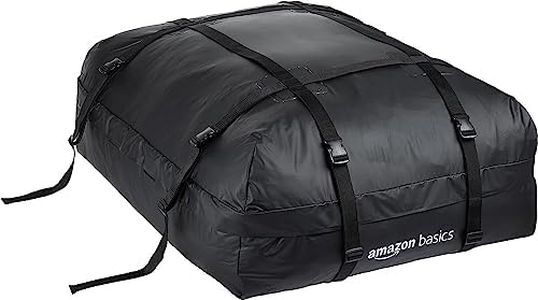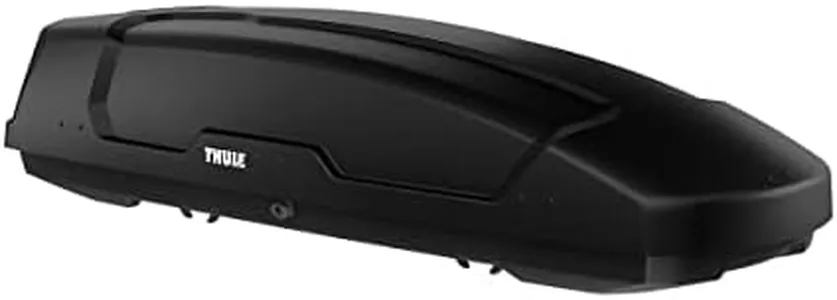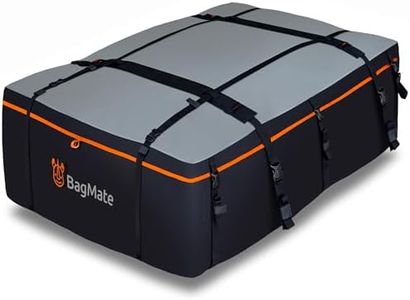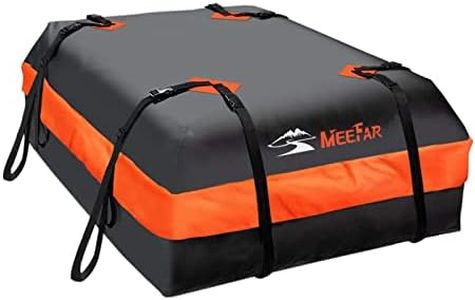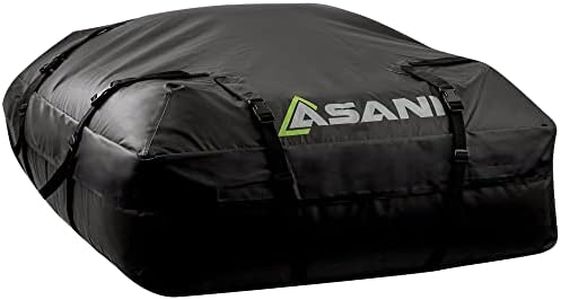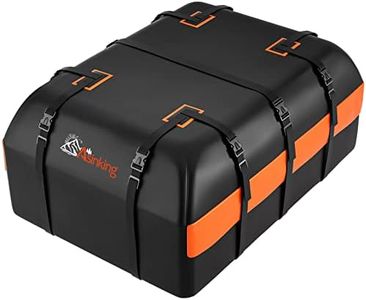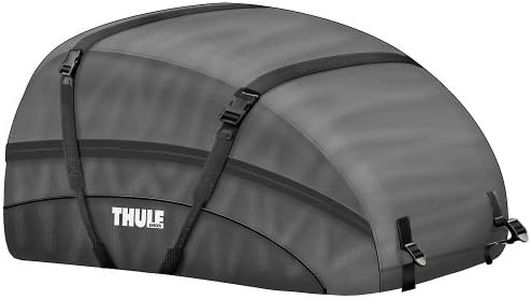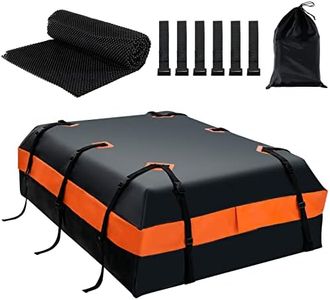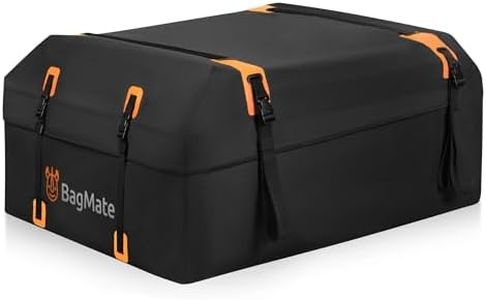We Use CookiesWe use cookies to enhance the security, performance,
functionality and for analytical and promotional activities. By continuing to browse this site you
are agreeing to our privacy policy
10 Best Car Top Carriers
From leading brands and best sellers available on the web.Buying Guide for the Best Car Top Carriers
Choosing the right car-top carrier is important for making sure your travels are comfortable, safe, and efficient. A car-top carrier lets you carry extra luggage and gear on the roof of your vehicle, freeing up cabin space and making trips easier, especially for families or long journeys. To find a carrier that fits your needs, think about what items you want to carry, how often you’ll use it, and what type of car you drive. Pay attention to the main specifications, as each one can make a big difference in usability and convenience.Capacity (Volume)Capacity refers to how much space is available inside the carrier, often measured in liters or cubic feet. This spec is important because it determines how much gear you can carry—larger volumes suit big families or people hauling bulky items, while smaller options are better for light packers or compact cars. When looking at capacity, divide options into small (under 12 cu ft), medium (12–18 cu ft), and large (over 18 cu ft). Think about your typical trips: weekend getaways may require less space, while family holidays might need more. Match the carrier’s capacity to your packing habits to avoid over- or under-buying.
DimensionsThe physical length, width, and height of the carrier matter because they determine how the box fits on your roof and affect clearance for parking or entering garages. Short, wide boxes are great for camping gear or strollers, while longer, slimmer carriers can hold skis or snowboards. Before buying, check your car’s roof measurements and consider what you’ll carry most often. Make sure the dimensions suit both your vehicle and your storage needs.
Mounting System (Attachment Type)This refers to how the carrier is attached to your car’s roof, usually through roof racks, rails, or crossbars. The attachment type is important for safety, ease of installation, and compatibility. Some carriers fit with most standard roof racks, while others require specific types or kits. Basic mounting systems are simple to use but might not be as secure, while advanced attachments often add stability but can be more complex. To choose, check what type of roof system your car has and whether you want fast, tool-less mounting or a more permanent setup.
MaterialCarriers are made from different materials such as hard-shell plastics or soft-sided fabrics. Material affects durability, weather protection, and weight. Hard-shell carriers offer better protection from rain and theft but are heavier and less flexible. Soft-sided carriers are lighter and easier to store when not in use but may not protect contents as well. For frequent, all-weather travel, a hard shell might be best; for occasional or space-saving use, soft-sided can work well.
Ease of AccessEase of access refers to how you open and load the carrier—through one side, both sides, or even from the back. It matters for convenience when packing and unpacking, especially in tight spaces. Single-side openings are simple but may be tricky if parked close to a wall; dual-side options let you open from either side for maximum flexibility. Think about where you usually park and how you load gear. If accessibility is key for you, choose a design that matches your needs.
Weight LimitThis is the maximum weight the carrier can safely hold. It’s crucial because overloading can damage your vehicle or cause hazards. Carriers are often segmented into low (under 75 lbs), medium (75–125 lbs), and high (over 125 lbs) weight limits. Consider not just the volume but the actual weight of your typical load—heavy camping gear or tools might require a carrier with a higher limit. Always check your car’s roof weight rating as well to stay safe.
AerodynamicsAerodynamics describes how the shape of the carrier affects wind resistance, which influences fuel efficiency and noise while driving. Sleeker, lower-profile carriers cut through the air better and are quieter, while bulky carriers can create more drag and noise. If you take many highway trips or are concerned about fuel usage, opt for a streamlined, aerodynamic carrier shape.
Security FeaturesThese include locks, reinforced shells, or tamper-proof fasteners that keep your belongings safe. Security is important for anyone who plans to leave items in the carrier while away from the car. Some carriers come with built-in locks or options to add your own. If you plan on carrying valuables or parking in less secure areas, prioritize a carrier with strong security features.
